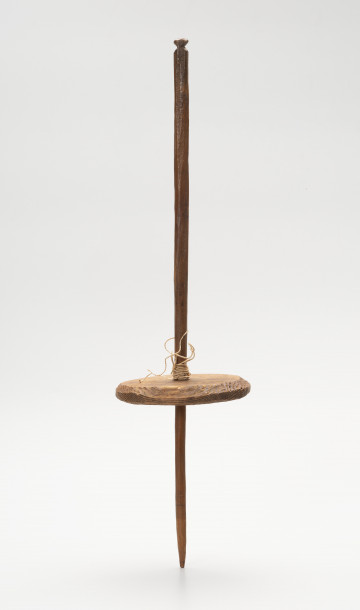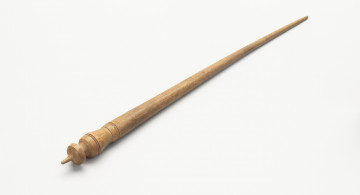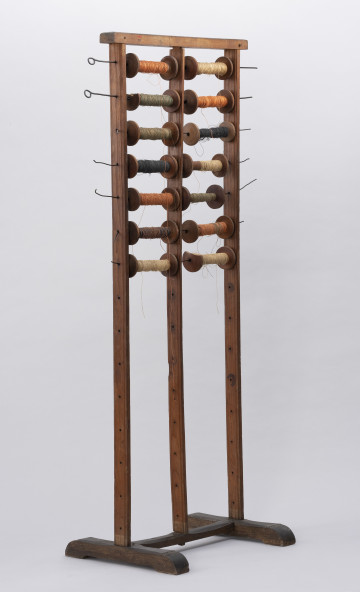
Distaff
1890 — 1939
National Museum in Szczecin
Part of the collection: Folk weaving
The spinning wheel is a mechanical device that has replaced the spindle in the production of yarn from fibres, both animal (wool) and bast (flax and hemp). The long tradition of spinning on spinning wheels has its origins in Asia. They have been used in India and China since approximately the 3rd century, in Arab countries since the 8th century and in Western Europe since the 13th century. They widely appeared in Poland around the middle of the 16th century. Originally hand-powered, over time the reels were provided with a foot drive, making the spinning process faster. Indeed, both hands could be used to spin thread. Considering the position of the spindle and drive wheel relative to each other, reels can be divided into two types: vertical and horizontal. The design of the device within each type may vary. The 19th-century reel on display is an example of the horizontal foot-powered type. The very rich decoration testifies to the great artistry of the craftsman who made it. This may also indicate that it was intended as a gift. The spinning wheel has survived to this day without the spindle assembly. Spinning was a typically women's activity. This skill, which requires knowledge and experience, used to be commonly taught to maidens preparing to become housewives. Women spun both for personal use and as wage labour. In the villages, they would often meet in one of the cottages during autumn and winter to work together. The spinning, accompanied by the characteristic rhythmic whirring of the reels, was made more pleasant by conversations and singing. The development of the textile industry meant that spinning wheels went out of common use, but they never completely disappeared. Today, they are used in folk and artistic weaving. Spinning on a spinning wheel has also become a hobby. Agnieszka Słowińska
Author / creator
Object type
spinning wheel
Technique
carpentry techniques, turning (machining), woodcarving techniques
Material
wood, metal
Origin / acquisition method
acquisition
Creation time / dating
Creation / finding place
Owner
Muzeum Narodowe w Szczecinie
Identification number
Location / status

1890 — 1939
National Museum in Szczecin

1945 — 1970
National Museum in Szczecin

1801 — 1939
National Museum in Szczecin
DISCOVER this TOPIC
National Museum in Lublin
DISCOVER this PATH
Educational path